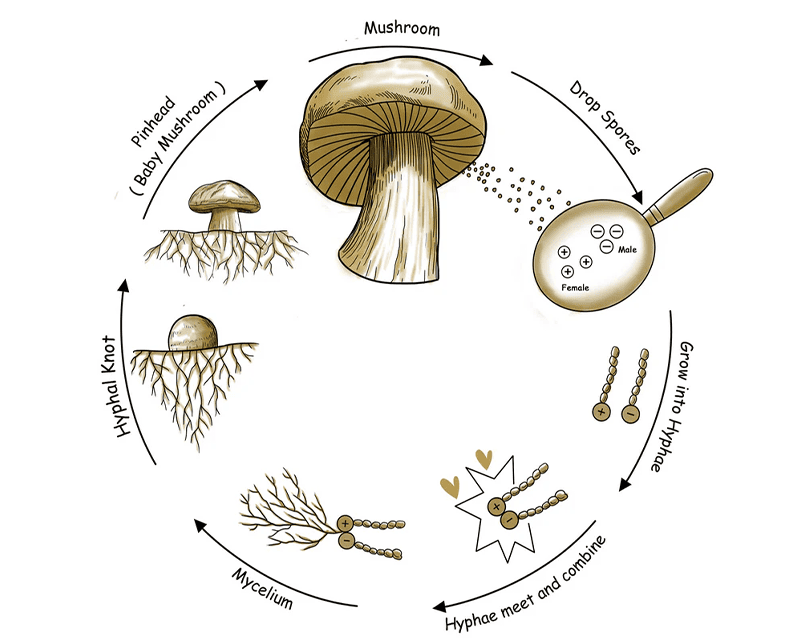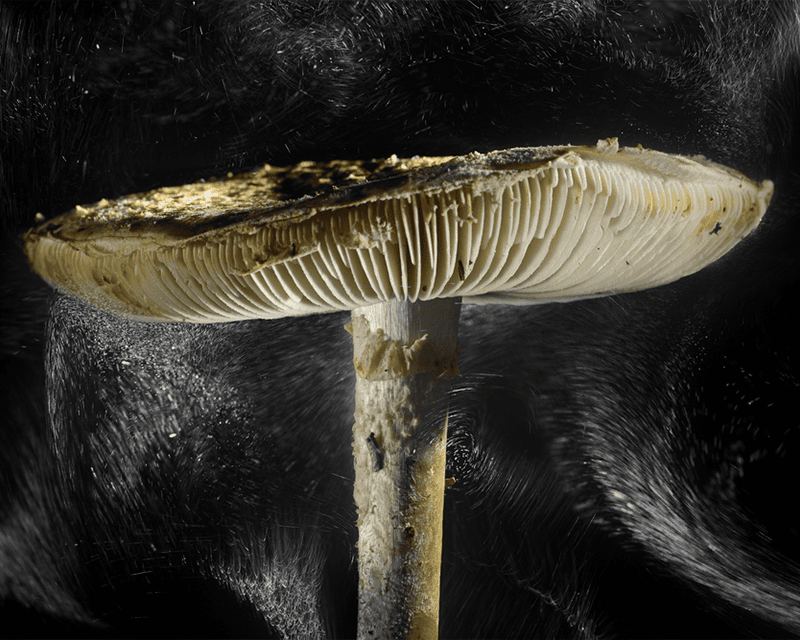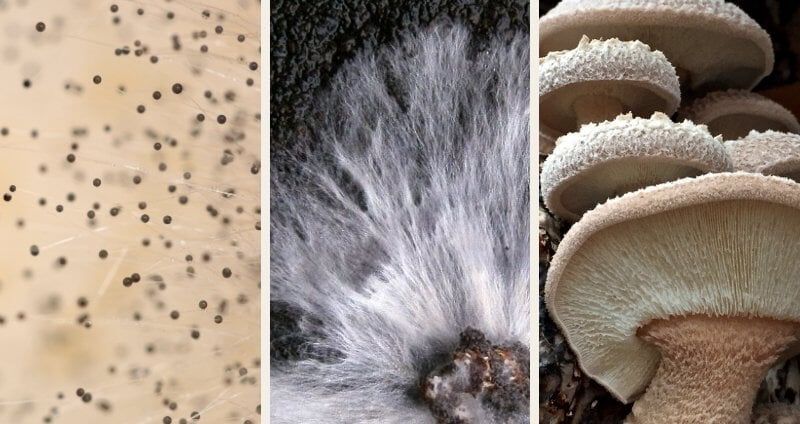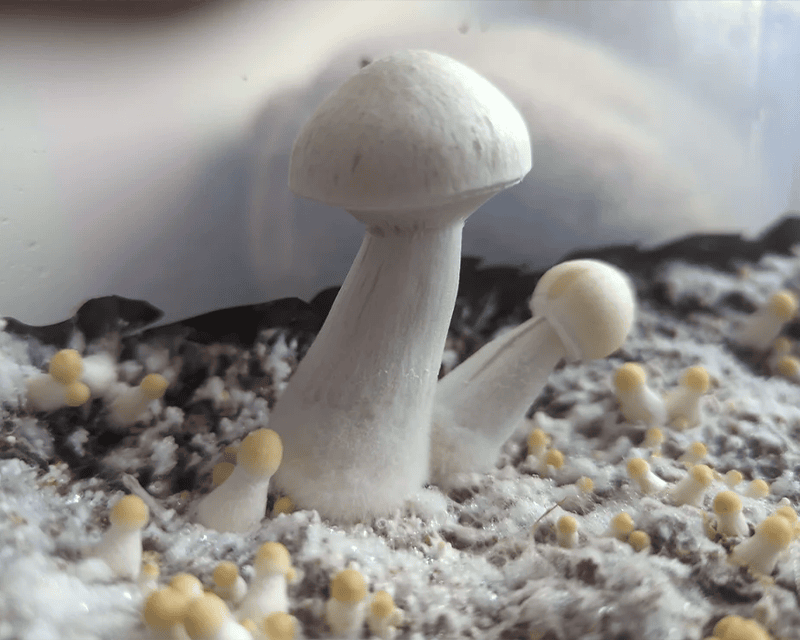Stages of Mushroom Growth:
- Mushrooms undergo various stages of growth as they develop from spores into fully-formed fruiting bodies.
- The process begins with spore dispersal, where tiny reproductive cells are released into the environment.
- These spores then germinate, forming a network of filaments known as mycelium.
- This underground network serves as the main body of the fungus, extracting nutrients from its surroundings.
- As the mycelium matures, it begins to form the structure that will eventually produce the mushroom's spores— the fruiting body.
- This stage is characterized by the expansion of the cap and the development of the spore-producing structures underneath.
- Once the spores are fully mature, they are released into the environment, either passively or actively, to begin the cycle anew.
- The entire process plays a crucial role in the ecosystem, contributing to decomposition and nutrient cycling.
Spore Dispersal:
Spore dispersal is a crucial stage in the life cycle of fungi, ensuring their survival and reproduction. Once the spores are formed within the fruiting body of the mushroom, they need to be dispersed to new habitats where they can germinate and grow. Various mechanisms are involved in spore dispersal, such as wind, water, animals, or even human activities inadvertently carrying spores from one place to another.
Wind is one of the most common methods of spore dispersal for many fungi. The lightweight spores are easily carried by the slightest breeze, dispersing them over a wide area. Water can also play a significant role in spore dispersal, especially for aquatic fungi or those living in moist environments. Animals, ranging from insects to larger mammals, can unknowingly transport spores on their fur, feathers, or through ingestion and subsequent excretion, aiding in the dispersal of fungal spores across diverse habitats.
Germination:
Mushroom germination marks the beginning of the growth process. It is a crucial stage where the spores, dispersed by various means like wind or animals, find a suitable environment to settle and start the development process. Once a spore lands in a favorable location with adequate moisture and nutrients, it begins to absorb water and swell, initiating the germination process.
As the spore absorbs water, it activates a chain of biochemical reactions that lead to the growth of a tiny thread-like structure known as a hypha. The hypha extends and branches out, forming a network called mycelium. This mycelial network is the foundation for the eventual formation of the fruiting body, which will bear the reproductive structures of the mushroom.
Mycelium Formation:
Mycelium formation is a crucial stage in the growth cycle of mushrooms. Once the spores have found a suitable environment for germination, they begin to develop into thread-like structures known as hyphae. These hyphae interconnect and form a network, which eventually evolves into what is called mycelium. The mycelium serves as the foundation for the mushroom's growth, as it absorbs nutrients from the surrounding environment to support the fungus's development.
As the mycelium expands and matures, it plays a vital role in breaking down organic matter through the process of decomposition. This decomposition not only releases essential nutrients back into the soil but also helps to recycle matter in the ecosystem. The mycelium's intricate web-like structure also aids in the absorption of water and minerals, further supporting the growth and health of the mushroom.
Fruiting Body Development:
Fruiting bodies, also known as mushrooms, are the visible reproductive structures that emerge from the mycelium underground. They develop rapidly, transitioning from small, pin-like structures to fully formed mushrooms within a short period of time. As the fruiting body expands, the cap takes on its characteristic shape and color, while the stem elongates to support the cap above ground.
During fruiting body development, the mushroom undergoes intricate physiological changes. The cap expands to allow for the gills or pores underneath to mature and release spores when the mushroom reaches maturity. This crucial stage is essential for the continuation of the mushroom life cycle as it marks the culmination of the growth process, leading to spore dispersal and the potential for new mycelium to colonize new substrates.
Cap Expansion:
During the cap expansion stage of mushroom growth, the fruiting body undergoes a significant transformation. As the cap continues to grow, it stretches and expands, revealing the intricate gills underneath. This expansion is crucial for the mushroom's reproduction process, as it allows for the efficient dispersal of spores.
The cap expansion stage is a visually striking phase in the mushroom's development, as the cap progressively broadens and takes on its distinct shape. The expansion of the cap is a result of the mycelium's intricate network spreading through the fruiting body, supplying essential nutrients and water. Ultimately, the cap expansion sets the stage for spore production and release, marking a key milestone in the mushroom's life cycle.
Spore Production:
Spore production is a crucial stage in the life cycle of mushrooms. Once the mycelium has established itself and nutrients are sufficient, the hyphae start forming specialized structures called spore-producing structures. These structures, such as gills in agarics or pores in boletes, contain the spores that will eventually be released into the environment. The process of spore production is essential for the dispersal of mushroom genetic material and plays a significant role in the reproduction of these fungi.
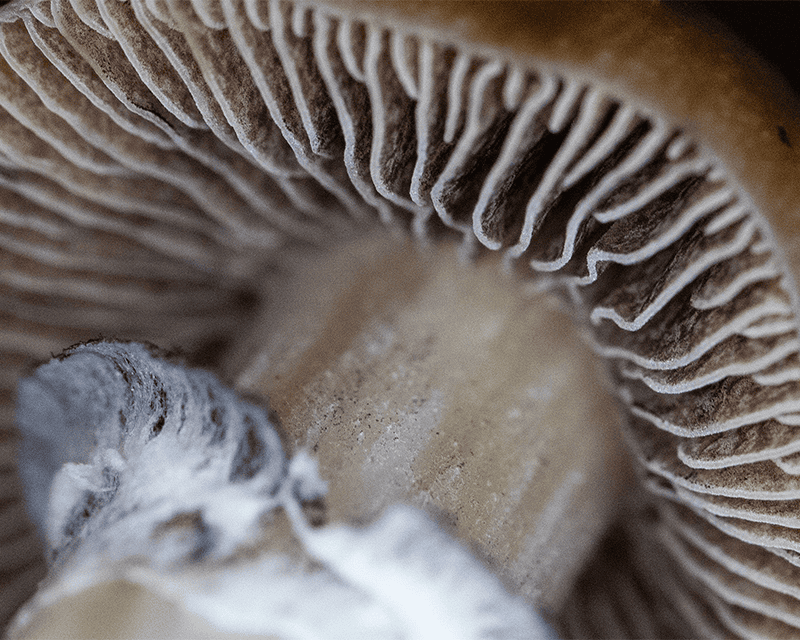
As the spore-producing structures mature, they release countless microscopic spores into the surrounding environment. These spores are carried away by various means, including wind, water, animals, and insects. The dispersal of spores ensures the survival and propagation of mushroom species, allowing them to colonize new habitats and continue their life cycle. Spore production is not only crucial for the reproduction of mushrooms but also contributes to the biodiversity and ecosystem dynamics in which they play a vital role.
Spore Release:
Once the fruiting body has reached maturity, the crucial process of spore release begins. This stage marks the culmination of the mushroom's life cycle, as it readies itself to disperse its reproductive spores into the surrounding environment. The mechanism for spore release varies among different species of mushrooms, with some relying on external factors such as wind or animals brushing against the cap, while others use built-in mechanisms for propulsion.
The release of spores plays a vital role in the continuation of the mushroom population, as these microscopic reproductive units carry the potential to germinate into new mycelium colonies. By dispersing spores far and wide, mushrooms increase their chances of survival and propagation. In this way, spore release is not just a singular event in the life of a mushroom but a pivotal moment in ensuring the persistence of the species in its ecosystem.
Decomposition:
While many may associate mushrooms with culinary delights or colorful forest landscapes, their critical role in decomposition often goes unnoticed. Upon the completion of spore release, the final stage of a mushroom's life cycle commences - decomposition. This process is essential in breaking down organic matter, such as dead plants and animals, into simpler nutrients that contribute to soil health.
As mushrooms decompose organic matter, they release essential nutrients back into the soil, enriching it and fostering the growth of new plant life. Through their mycelium network, mushrooms break down complex compounds present in dead organisms, facilitating the recycling of carbon, nitrogen, and other vital elements. Far from being merely a farewell to their own life cycle, the decomposition stage marks the beginning of a new chapter in the ecosystem's ongoing cycle of life and renewal.
Role in Ecosystem:
Mushrooms play a vital role in the ecosystem, supporting the natural cycle of decomposition and recycling of nutrients. As decomposers, they break down organic matter, such as dead plants and animals, into simpler compounds. Through this process, mushrooms release essential nutrients back into the soil, which can then be taken up by plants for growth and development. This nutrient recycling is crucial for maintaining the health of the ecosystem and ensuring the availability of vital elements for various organisms.
Furthermore, mushrooms form symbiotic relationships with plants, known as mycorrhizae, where they exchange nutrients with their host plants. In this mutually beneficial partnership, mushrooms help plants absorb water and minerals from the soil, while receiving sugars produced by the plants through photosynthesis. This collaboration enhances the overall health and resilience of both the mushrooms and the plants, ultimately contributing to the ecosystem's biodiversity and stability.
